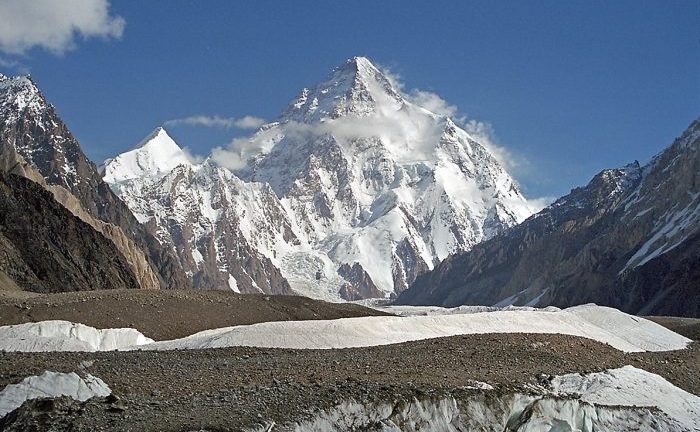The northern region of Pakistan is graced with some of the world’s most magnificent and imposing mountain ranges. This geological wonder is a result of the collision of the Indo-Australian tectonic plate, giving rise to the spectacular peaks that adorn the Asian continent. Among these, the convergence of three major mountain ranges, namely the Himalayas, Karakoram (the second-highest in the world), and Hindukush, creates a unique and awe-inspiring geographical landmark on our planet. Located at the confluence of the Indus and Gilgit rivers near the town of Jaglot, approximately 40 km south of Gilgit city, this region is a mecca for geologists and climbers from around the globe.
With more than a hundred peaks soaring above 7,000 meters, Pakistan boasts a remarkable collection of natural wonders. In fact, out of the world’s 14 highest peaks, an impressive five are found in Pakistan, reaching staggering heights of 8,600 meters to 28,000 feet. These peaks have become iconic attractions for mountaineers and adventurers seeking to conquer their summits and relish in the majesty of these untamed giants.
In this blog, we will delve into the majesty of some of the major mountain ranges in Pakistan, paying homage to the sublimity of these peaks that captivate our hearts and minds. Join us on a journey of wonder and discovery as we traverse the splendor of these majestic mountain ranges in Pakistan.
List of Popular Mountain Ranges in Pakistan
Himalayas (Western) Mountain Range

The Himalayas, also referred to as the Western Mountain Range, proudly holds the title of being the world’s longest mountain range, stretching an astounding 2,400 kilometers. Spanning five countries, namely Pakistan, China, India, Bhutan, and Nepal, its grandeur is unrivaled. Among its most renowned peaks, the “Killer Mountain” known as “Nanga Parbat,” stands tall at 8,126 meters (26,660 feet) above sea level, securing its position as the ninth highest peak globally. The Himalayas also house the iconic Mount Everest, the world’s highest peak, gracefully straddling the border between China and Nepal.
In the Western part of the Himalayas lies the Astore District in Gilgit Baltistan, Pakistan, offering enchanting attractions such as Deosai National Park, perfect for overnight camping, fishing, and hiking endeavors. This splendid range adds to the grandeur of Pakistan’s mountainous landscape, making it a must-visit destination for nature lovers and adventure seekers alike.
The Karakoram Range

The Karakoram Range, proudly standing as the second largest in the world, weaves its way through the borders of Ladakh in India, Xinjiang in China, and Gilgit-Baltistan in Pakistan. Boasting over 50 peaks exceeding 7,000 meters in elevation, this range stretches from the edge of the Tibetan Plateau in the northeast to the Pamir Mountains in the north.
In 1856, the first-ever attempt to conquer the Karakoram Range was made, and it remains a treasured destination for mountaineers, trekkers, and hikers due to its serene lakes and breathtaking vistas. Among its illustrious peaks, the renowned K2 takes the spotlight, known as “Savage Mountain” due to its challenging ascent. The Karakoram Range holds a special place on Pakistan’s map of mountain ranges, captivating all who visit with its awe-inspiring beauty.
The Hindu Kush Mountains
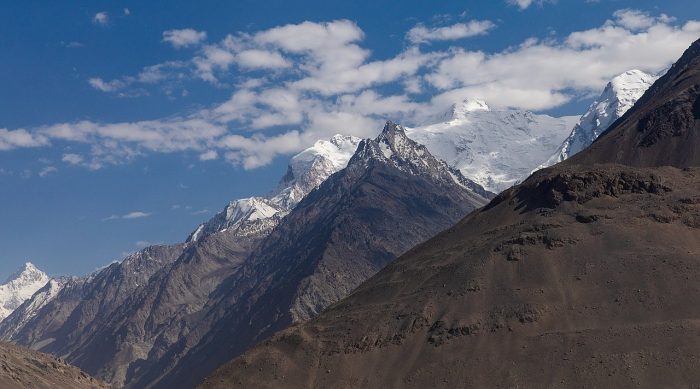
The Hindu Kush Mountains, discovered in 1830, beckon adventurers to explore their majestic heights. Situated in the northwest of Pakistan and extending towards the northwest of the Pamirs, this range shares its borders with both Pakistan and Afghanistan. Stretching over 950 kilometers, the Hindu Kush boasts the towering peak of Tirich Mir, reaching a height of 7,690 meters, majestically located in Chitral. Another notable peak, Noshaq, stands tall at 7,492 meters along the Pak-Afghan border.
With its various ranges encompassing regions like Kohistan and Swat in Pakistan, the Hindu Kush offers a captivating destination for exploration. Summertime provides the perfect season to witness the splendor of the Hindu Kush Mountains, contributing significantly to the allure of Pakistan’s mountainous landscapes.
The Sulaiman Mountain Range
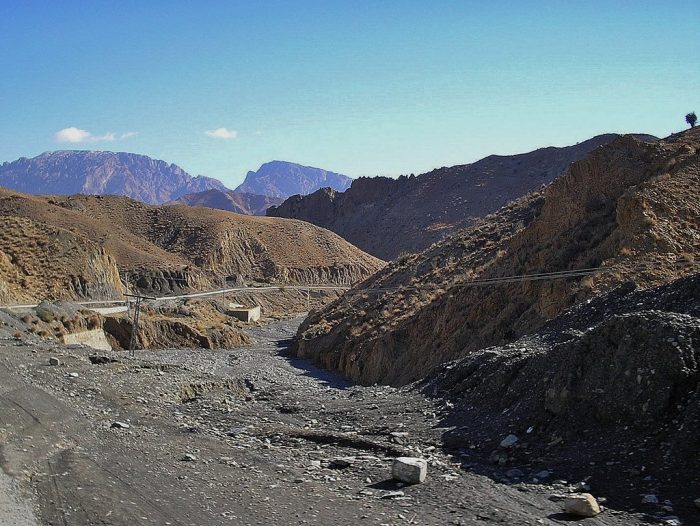
The Sulaiman Mountain Range extends across the north of Zabul province in Afghanistan and the north of Balochistan province in Pakistan. Although its peaks may not reach the heights of the aforementioned ranges, the Sulaiman Range remains an attractive destination for adventurers seeking a thrilling experience. Among its notable peaks, Takht-e-Sulaiman, also known as “Sulaiman’s Throne,” stands out, soaring to a height of 3,487 meters (11,437 feet) above sea level. Nestled ideally between the Iranian Plateau and the Indus River, this range offers a unique charm for exploration. For history enthusiasts, exploring historical places in Peshawar nearby could add further depth to their journey.
The Safed Koh Mountain

The Safed Koh Mountain, often referred to as “The White Mountain Range,” shares its borders between Pakistan and Afghanistan. Standing tall at an impressive height of 4,761 meters (15,620 feet), this majestic range boasts the highest peak, Sikaram Peak. The region surrounding Safed Koh Mountain is adorned with fascinating sites like the world’s highest Polo ground, attracting climbers and hikers from near and far. The famous Khyber Pass and Shandur Top are in close proximity, luring adventurous spirits during the Shandur Polo Festival. In Pashto, this mountain is known as “Spin Ghar.” The cities of Parachinar in Kurram District, Khyber Pakhtunkhwa Province of Pakistan, and Jalalabad, Gardez, Paktia, and Khost in Afghanistan are closest to this captivating range. Additionally, travelers can explore the best places to visit in Islamabad, adding more delights to their journey.
Hindu Raj

The Hindu Raj, which translates to “Hindu rule,” proudly stands as one of the renowned mountain ranges in Pakistan, situated between the two famous ranges, Hindu Kush and Karakoram. Stretching approximately 500 miles (800 km) in length and 150 miles (240 km) in width, it lies in the northern regions of Gilgit Baltistan and the Khyber Pakhtunkhwa province. Some definitions even encompass it within the broader Hindu Kush region. With its highest peak, “Koyo Zom,” reaching an elevation of 6,872 meters (22,546 feet), the Hindu Raj range boasts other notable peaks such as Buni Zom, Ghamubar Zom, and Gul Lasht Zom, ranging from 5,000 meters to 6,000 meters in height on average. Its peaks offer an elevation reaching up to 22,500 feet, making the Hindu Raj one of the distinguished mountain ranges on Pakistan’s map. Travelers interested in exploring this captivating range can find reputable tourism companies in Pakistan to enhance their experience.
Kirthar Range
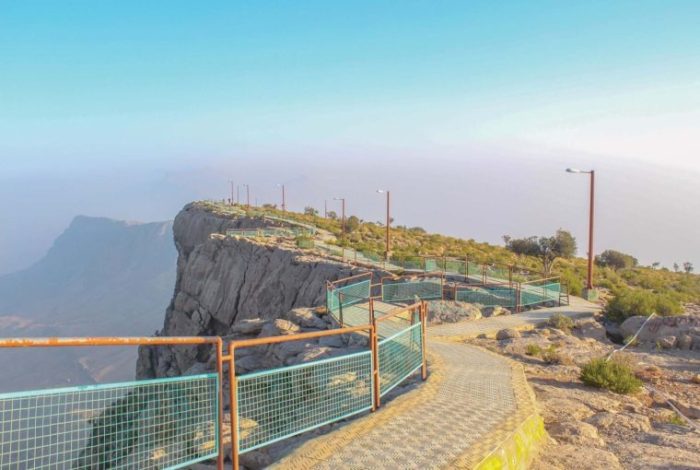
The Kirthar Range serves as the natural boundary between two Pakistani provinces, Balochistan and Sindh. Stretching approximately 190 miles (310 km) from the Mula River in Balochistan to Cape Monze, near Karachi, and reaching the Arabian Sea, this range covers an expansive area of 9,000 square kilometers. Among its notable features, the Gaji Lak Pass stands out as one of the frequently used passes, connecting the roads from Zidi and Khuzdar to Jhalawan.
Within the captivating expanse of the Kirthar Range, a treasure trove of 21 prehistoric sites can be found, adding to the region’s historical significance. The Taung Tombs dating back to the 16th-18th century are among the remarkable findings within this mountain range. Zardak Peak, rising to an impressive height of 7,430 feet (2,260 meters), ranks among the highest peaks of the range. Following closely, Barugh Hill stands at 7,056 feet (2,151 meters) in elevation. This enchanting range offers a glimpse into the stunning landscapes of Pakistan, enticing travelers to explore its wonders. For history enthusiasts, a visit to historical places in Pakistan would make for a rewarding experience.
Salt Range
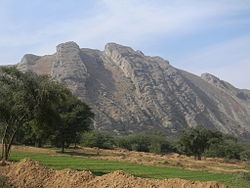
The Salt Range owes its name to the extensive deposits of rock salt found within, making it the richest salt field globally. This hill station is nestled in the province of Punjab, Pakistan. Stretching a total length of 186 miles (300 km) from east to west, the range varies in width from 5 to 19 miles in the central and eastern regions. The highest point in the Salt Range is Sakesar Mountain, reaching an elevation of 4,992 feet (1,522 meters).
Notable for its abundant salt mines, including Khewra, Kalabagh, and Warcha, the Salt Range also boasts deposits of medium-quality coal, gypsum, and various other minerals. Geographically, it lies to the south of the Potohar Plateau and north of the Jhelum River. Several famous lakes, such as Khabeki Lake, Namal Lake, and Uchhali Lake, add to the natural charm of this region. For a deeper understanding of Pakistan’s heritage, travelers can also explore the country’s museums, gaining insights into its rich history and cultural heritage.
Ras Koh Hills

The Ras Koh mountains find their home in the Chagai District, at the heart of Balochistan province in Pakistan. Derived from the Balochi language, “Ras Koh” translates to “Gateway to the Mountains,” where “Ras” signifies “gateway” and “Koh” refers to “mountain.” The Ras Koh range holds historical significance, as it witnessed Pakistan’s first nuclear test on 28th May 1998.
Lying between the northern side of the Sulaiman Mountains and the southwest of the lower Kirthar Mountains, Ras Koh Hills boast an average elevation of 600 meters, reaching up to 3,000 meters in certain areas. Comprising granite hills as part of the Sulaiman Mountain, this range lacks vegetation, making it a barren landscape. The local population often leads a nomadic lifestyle, raising sheep, goats, and camels. For a delightful culinary experience, explore the best cafes in Islamabad while traveling in Pakistan.

